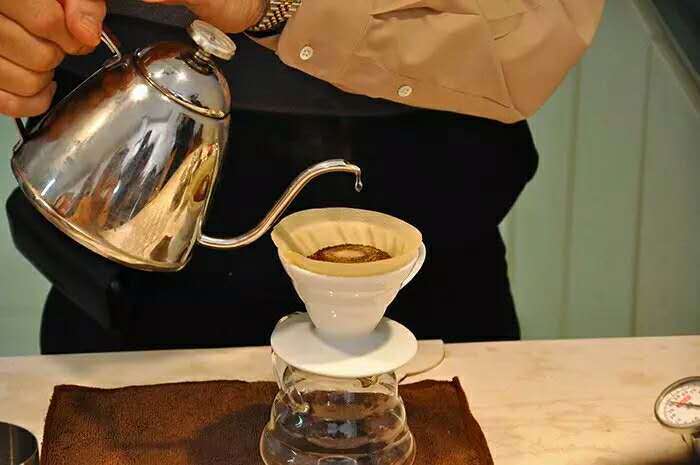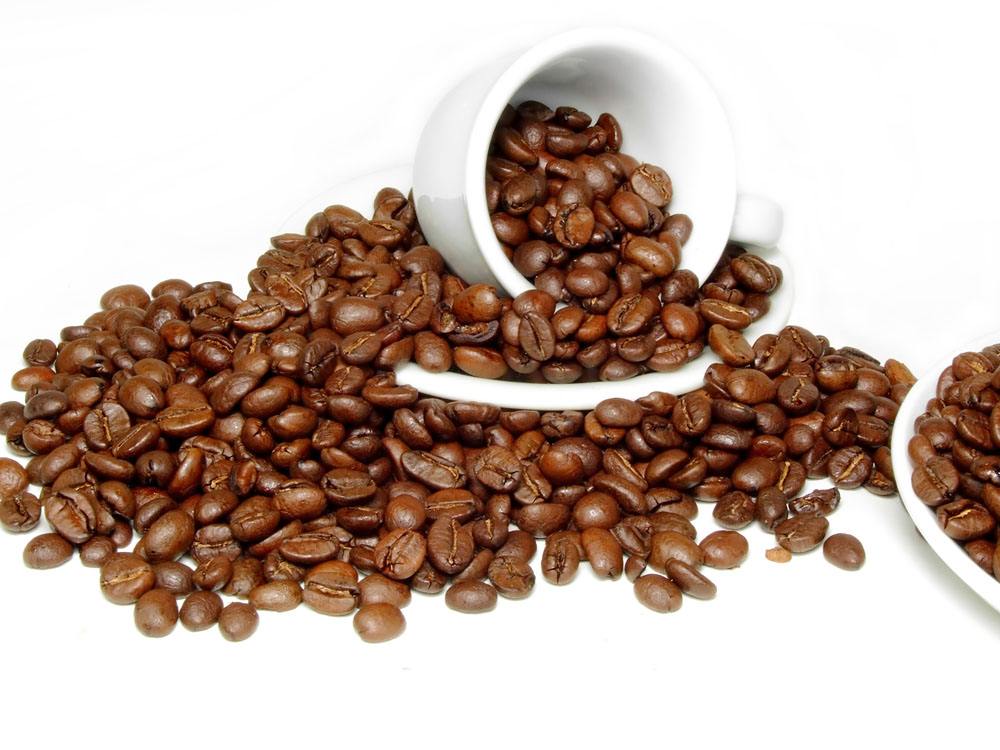Coffee brewing from the perspective of water, about taste perception
Pay attention to coffee reviews (Weixin Official Accounts vdailycom ) and find a beautiful cafe to open your own shop
The trigeminal sensory system
The trigeminal nervous system is unfamiliar to the average person, but there has been a lot of recent work on how it affects flavor perception. These nerve endings are widely distributed in the nasal passages and oral cavity. They give people a sense of temperature and pain, and they can transmit irritation and tingling at even the lowest levels. They can affect our sense of smell and taste, especially the intensity of taste. Many substances present in coffee can cause this sensation, such as aromatic thiols, citric acid, phosphoric acid, quinic acid. It sounds like the trigeminal system plays a negative role, but it actually helps people perceive food more comprehensively, including coffee.
Especially with regard to aversion (it is a feeling of eating. After eating something, your tongue still feels dry, wrinkled, rough, astringent, usually caused by lack of saliva. Some substances in coffee can condense proteins in saliva and cause this feeling. Most of the time people mistake this feeling for a tactile sensation. This convergence affects how people perceive coffee taste and aroma.
When we consider the water used to brew coffee, we should consider the factors that affect coffee flavor. Certain substances in the water, such as salt, can upset the balance of coffee flavor, and other substances in the water can also affect the extraction of coffee particles. When brewing coffee, attention should be paid to the extraction of carbohydrates (sugar), excessive extraction of bitter substances and taste neutralization phenomenon (combination of alkaline substances and acidic substances). Here is a brief introduction to the brewing process of coffee.

Coffee brewing process
Coffee brewing involves two aspects: physics and chemistry. Physical aspects include the effects of water on coffee powder (e.g. swelling) and the dissolution of solid matter (e.g. temperature effects). The physical aspects also include the body movements of the person during brewing (movement, stirring, pause, etc.). Chemical aspects include flavor, taste, and aroma dissolved into coffee. All of this affects the perception of coffee.
Brewing methods vary and can generally be divided into four types: coffee powder does not separate from coffee liquid (such as Turkey, Greece, Russia, Middle East, etc.); coffee and water contact for a period of time and then coffee and coffee liquid separation (such as French pressure, siphon pot); water continuity through coffee powder (drip filtration); using pressure technology to extract coffee (espresso). Although the method is different, the purpose is the same: to extract the flavor substances in coffee into the coffee liquid.
Physical process of brewing
During brewing, coffee powder undergoes several stages to complete the extraction process of coffee flavor substances.
The initial contact and penetration phase
1. At first, the water penetrates through the coffee bed, the coffee particles release gas (carbon dioxide), and the coffee particles are wetted. If the coffee is freshly roasted, there will be a large amount of carbon dioxide released before the water completely penetrates into the coffee particles. At this time, the water will not flow through the least resistant part of the coffee bed. At this time, the water will flow in a way that diffuses around the coffee bed. This phenomenon is called hydrodynamic dispersion and has a direct effect on whether the coffee powder layer can be uniformly wetted. Factors affecting dispersion are: external forces (pressure from coffee machine); geometry of pores in coffee particles; interaction of coffee with water; density and viscosity of solution. The degree of uniformity of steeping/wetting determines the time (how fast) for the coffee ground layer to reach saturation with water.
The rate at which coffee particles expand depends on the density of the coffee particles (dark roast coffee is less dense than light roast coffee and has more pores in the particles than light roast coffee); the size of the coffee grind (small coffee particles reach water saturation faster); and the quality of the water (substance composition and ions in the water).
The first dissolved substances are soluble substances on the surface of coffee particles, and the amount of soluble substances depends in part on the degree of coffee grinding and the time of coffee grinding. Freshly roasted and freshly ground coffee releases a lot of carbon dioxide. Coffee aroma begins to evaporate immediately after grinding, fresh/timely grinding will affect the aroma composition and level of coffee.
2. Water begins to soak into the coffee particles.
3. Coffee particles begin to swell.
4. The water-soluble substances in the coffee particles begin to dissolve (insoluble substances can also dissolve into liquids under the action of high temperature and pressure).
diffusion phase into liquid
Diffusion: The transfer of molecules from regions of high concentration to regions of low concentration until they are uniformly distributed. The rate of diffusion is proportional to the concentration gradient of the substance.
Soluble substances diffuse on the surface of coffee particles. This is the slowest step in coffee brewing and affects the rate of extraction. The diffusion process is influenced by physical factors (e.g. swelling of coffee particles, stirring of coffee powder layers) and chemical factors (mainly components in water).
Dissolve to final coffee liquid stage
At this stage, a large amount of substances dissolve from the coffee particles into the coffee solution. Convective mass transport is usually referred to as mass transfer between a moving fluid and a solid wall (or between two fluids in direct contact), which includes both convection caused by fluid displacement and diffusion between fluid molecules. This combined effect of molecular diffusion and convective diffusion is called convective mass transfer.
As the substance dissolves, the density and concentration of the liquid near the coffee particles becomes greater.
This more concentrated liquid continues to diffuse into the surrounding less concentrated liquid.
The degree of convective mass transfer is influenced by the characteristics of the substances (gases, liquids, solids) with which the liquid is exposed; by the fluid; and by the pore structure in the coffee particles. Convective mass transfer is significant in drip brewing because the fluidity of the water flowing through the coffee bed ensures that the coffee liquor does not become supersaturated with solids.
Brewing makes the flavor substances in coffee particles precipitate and diffuse into the coffee liquid. The extraction rate of coffee depends on the contact time between coffee powder and water, the temperature of water, and the mass action law (the chemical reaction rate is directly proportional to the effective mass of reactants, in which the effective mass actually refers to the concentration). That is, the extraction rate decreases with the increase of solid mass. If the water contains excessive amounts of soluble solids (TDS values are too high), the water will not extract the flavor substances from the coffee. At the beginning of brewing, the efficiency of water penetration through the powder layer depends on the composition of the water (temperature and TDS). As the flavor substances in coffee are extracted into the coffee solution (physical process), the chemical reactions caused by the composition and quality of the water also begin to affect the flavor and extraction of coffee.
Important Notice :
前街咖啡 FrontStreet Coffee has moved to new addredd:
FrontStreet Coffee Address: 315,Donghua East Road,GuangZhou
Tel:020 38364473
- Prev

Caffeine and chlorogenic acid, the embodiment of angels and demons
The two main characters in the complicated coffee world are caffeine and chlorogenic acid. Both protagonists are the incarnation of angels and demons. However, with the deepening of the research, the angel face of chlorogenic acid becomes more and more attractive. How to desensitize chlorogenic acid is the baker's witchcraft. (desensitization is to minimize the negative effects of chlorogenic acid.) chlorogenic acid (CGA) is the largest and largest in coffee.
- Next

Coffee master Lim Dong-Won tells you five misunderstandings about coffee!
Professional baristas Communication Please follow the Coffee Workshop (official Wechat account cafe_style) more and more people are beginning to taste the real flavor of coffee, but many coffee newcomers have some misunderstandings about coffee, such as whether coffee should be drunk while it is hot. Are the coffee beans as fresh as possible? Today, I will explain to you the five major misunderstandings of coffee that beginners often wonder. 1 coffee
Related
- Beginners will see the "Coffee pull flower" guide!
- What is the difference between ice blog purified milk and ordinary milk coffee?
- Why is the Philippines the largest producer of crops in Liberia?
- For coffee extraction, should the fine powder be retained?
- How does extracted espresso fill pressed powder? How much strength does it take to press the powder?
- How to make jasmine cold extract coffee? Is the jasmine + latte good?
- Will this little toy really make the coffee taste better? How does Lily Drip affect coffee extraction?
- Will the action of slapping the filter cup also affect coffee extraction?
- What's the difference between powder-to-water ratio and powder-to-liquid ratio?
- What is the Ethiopian local species? What does it have to do with Heirloom native species?

